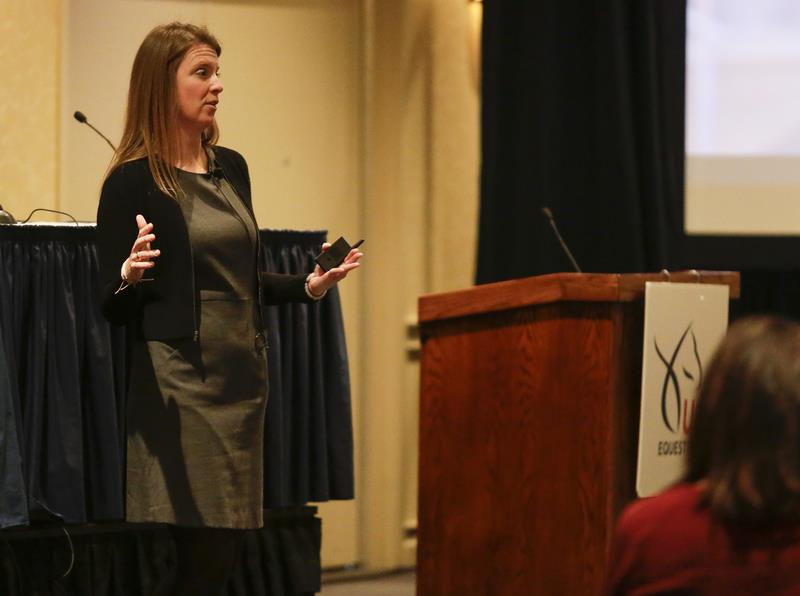Many Fortune 500 companies, sports leagues, professional athletes, and celebrities have faced media crises. Some arise from the incident with little harm, while others experience negative impact to their image, brand, and bottom lines. In the age of social media and a 24-hour news cycle, it is important that every organization have a media plan with guidance to effectively handle a media crisis.

During US Equestrian’s (USEF) Annual Meeting on Wednesday, attendees heard from crisis communication specialist Sarah Hamilton, current managing director at Kivvit and previous communications director for current Chicago Mayor Rahm Emanuel, who presented crisis management tips and strategies. By adhering to the guidance outlined below, any equestrian athlete, USEF affiliate, and show organizer can escape a media crisis with minimal damage.
Crisis management tips:
• Breathe – Think clearly about the situation and project a sense of calmness and control.
• Gather the facts – Don’t say something that could be retracted later. Know the facts before determining what to say and when to say it.
• Take action and be transparent – Don’t adopt a “bunker mentality.” Hiding the facts or being opaque will only do more damage. Disseminate the information when it’s confirmed and proceed from there.
• Get ahead of the situation – Don’t be on the defense. Share the facts, or even a fact that can shed light on what happened, when confirmed.
• Own the situation - Take responsibility for the incident and be humble.
• Don’t fuel the fire – Don’t make the situation worse or speculate about possibilities. Be measured and responsible in your response.
• Keep it short – Don’t use 50 words when 35 will suffice
• Delivery – Stay on point when delivering the approved message. Emphasize the main points and stick to them.
Common pitfalls to avoid:
• Don’t repeat the negative - During a crisis, there may be many negatively phrased questions; make sure to create a positive headline.
• Don’t use buzzwords and acronyms – Assume that people don’t know internal jargon.
• Don’t say “no comment” – It is better to say the information is not available at the immediate moment
• Don’t fill the silence – Once reporters are finished asking questions, thank them for their time and exit the discussion.
• Don’t wear distracting clothing or accessories – This can take away from message
About the Speaker: Sarah Hamilton
Sarah Hamilton is a managing director of the communications and brand-positining firm Kivvit in Chicago. She has worked closely with some of the country's top government officials, advancing their policy agendas and managing their media and messaging.
Before joining Kivvit, Hamilton worked in politics and government for more than a decade. Most recently, she was the director of communications for Mayor Rahm Emanuel, where she served as the mayor's chief spokesperson and managed a large team of spokespeople across the city. She was responsible for developing and implementing strategies to communicate and advance the mayor’s policy agenda, as well as overseeing all rapid-response functions.
Hamilton also has served as the director of public affairs at the Chicago Police Department, senior press secretary for Los Angeles Mayor Antonio Villaraigosa, a member of the National Advance Staff for Hillary Clinton’s first presidential campaign, and deputy director of communications for the Clinton Foundation.
Want more articles like this delivered to your inbox every week? Sign up here to receive our free Equestrian Weekly newsletter.
This article is original content produced by US Equestrian and may only be shared via social media. It is not to be repurposed or used on any other website aside from usequestrian.org.


